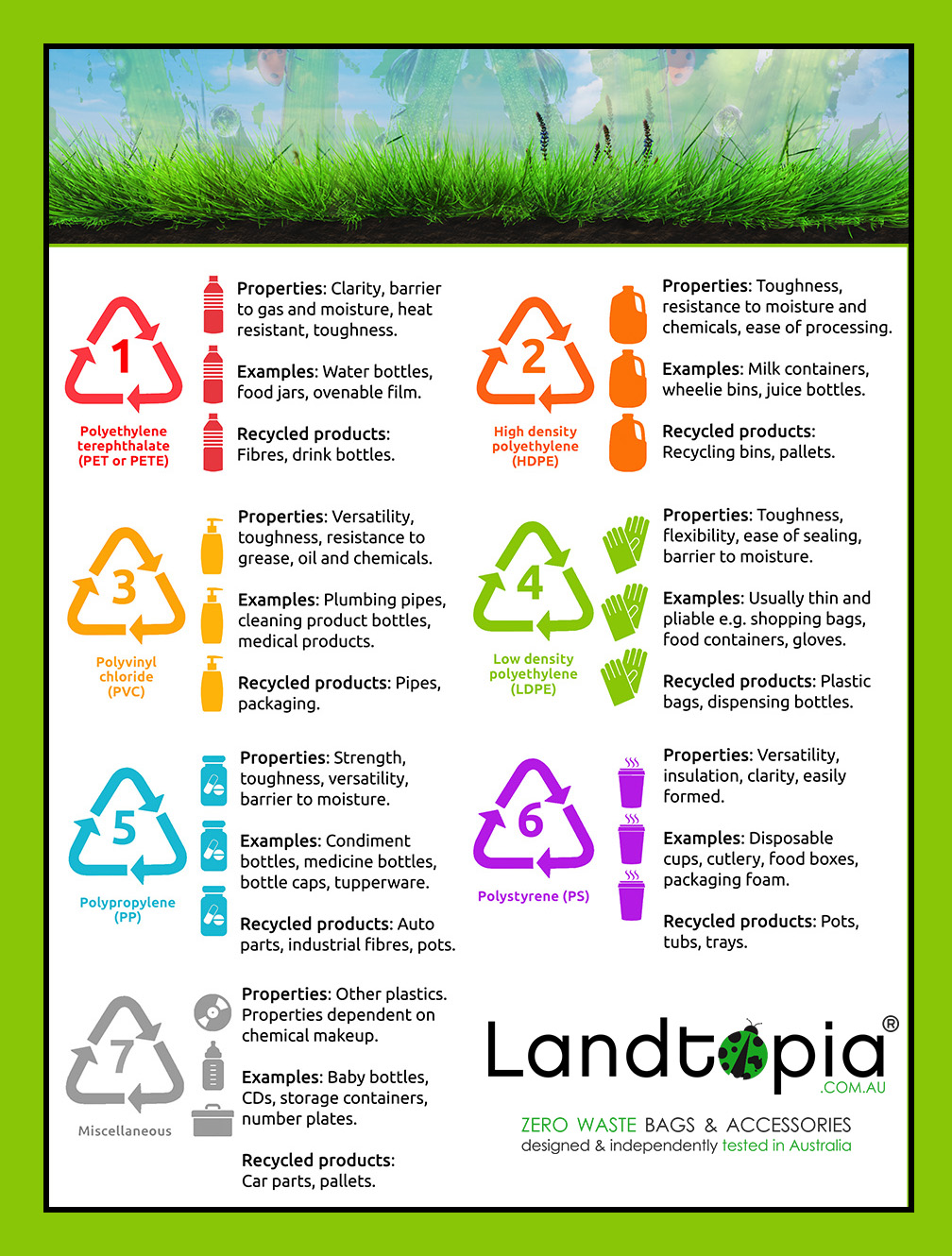Plastics 101
Know Your Plastics
Plastics are everywhere and part of our day to day life.
To select the plastics that are best for you, your children and for the environment, get to know the easy-to-identify plastic recycling codes you’ll usually find on the underside of the bottle or packaging. Look for these numbers and symbols before you buy.
Code 1: PET or PETE (polyethylene terephthalate).
You’ll most commonly see this in the thin, clear plastic of bottled water (or bottled cooking oil, peanut butter, soda, etc.). It’s appears safe for single use, but these bottles should not be reused, refilled, or heated. This plastic can be recycled once into new secondary products, such as textiles, and plastic timber.
Code 2: HDPE (high-density polyethylene).
This is the thicker, milkier or opaque plastic found in milk and water jugs, juice bottles, detergent, shampoo, and motor oil containers, and toys. Unlike #1, these are safe to refill and reuse, even though they may not look as snazzy as #1 or #7. Recyclable once into products similar to those for # 1 plastics.
Code 3: PVC (polyvinyl chloride).
Found in bibs, mattress covers, squeeze bottles, cling wrap, some peanut butter jars, and a few other food and detergent containers.
Code 4: LDPE (low-density polyethylene).
Found in soft, flexible plastics such as those used in grocery bags, plastic wrap, dry cleaning bags, shopping bags, and garbage bags.
Code 5: PP (polypropylene).
Found in hard but flexible plastics, such as those used for ice cream and yogurt containers, non woven bags. One of the safer plastics – recycle where you can.
Code 6: PS (polystyrene).
Found in rigid plastics such as opaque plastic spoons and forks, and in Styrofoam, such as those found in coffee cups and meat trays.
Code 7: Other (including polycarbonate, nylon, and acrylic).
Polycarbonate is also common in water bottles, sports bottles, clear plastic cutlery, and in the lining of food and formula cans.
